The latest in our Japanese Game Festival (日本のゲーム祭り), and it’s a big one! A few months back, I saw some pictures of a purple box with black illustrations on it. I saw the cards inside the box with their mixture of monotone and lurid colours, and I knew I had to have it. Sure, it helped that the designer is Hiroken, author of the TRICKTAKERs (his emphasis on capitals, not mine) series of games, but the lizard part of my brain knew I had to have it. I had to have the pretty box. I had to have Eternal Decks. So I put a stock alert on at Travel Games, and once I got the email I was waiting for, I was £50 poorer shortly after. It’s one of the best choices I’ve made in recent memory. Eternal Decks is superb.
If you’re used to the boards and playmats that we typically have in games from the West, you’ll be simultaneously surprised and impressed by the silky sheet that the Eternal Decks uses as its ‘board’. Right off the bat, it feels swish, it feels like something a bit special. There are spaces for the decks that you’ll be unlocking, spaces for the jewels, spaces for stage cards, an area called The River, and so on. It’s a glorified board, for sure, but it’s lovely and I want to stroke it.
Flirting briefly with the game itself now, it’s a limited communication, cooperative, hand-management game. In each of the three rows in ‘the field’, there are three Eternals which you need to unlock. Each is sitting atop a deck of cards, which players need to add to their hands, because if any player needs to play a card on their turn and cannot, the game ends in defeat. Unlocking an Eternal is easy on the face of it. Play cards in a row until a card reaches its deck. The rules say you can’t play the same colour or number as the previous card in the row. Okay, that’s one thing to consider. That makes things a little trickier. On top of that, each row has its own rules. In your first game, the top row has to be ascending, the middle row is descending, for instance. Trickier again.
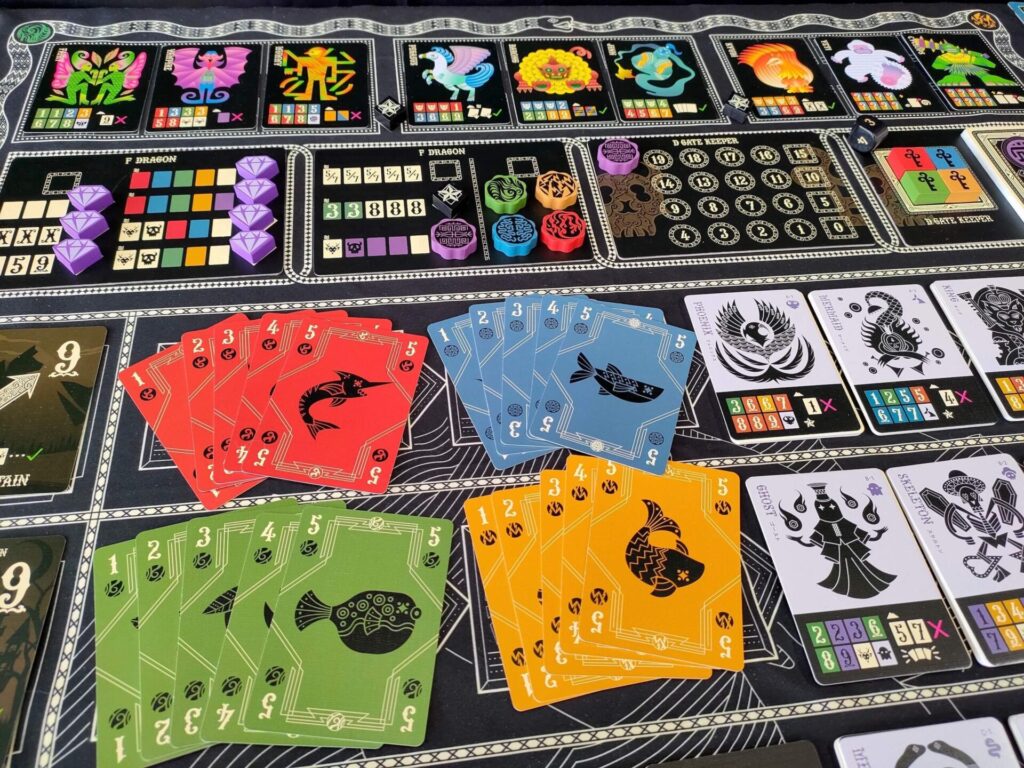
Let’s say the start of the game is going well. You’re running out of cards, but you manage to play the card that reaches an Eternal. The cards beneath that Eternal go to your hand – phew, you live to fight another day – but the Eternal itself goes to the top of the playmat and now adds an additional rule to your card play. So now, not only do you have to obey the placement rules for each row, you also cannot play a 5 or a 7 (for example). Ouch! And that’s just one Eternal. Unlock more, because you all need more cards, and more restrictions come into play. Happily, you can nullify these Eternal effects by unlocking jewels and placing them on their cards – hooray! But to unlock jewels, you need to play specific combinations of cards to the river, emptying your hand faster, and slowing down your combined progress to unlocking more Eternals, and more cards. It’s infuriating and delicious at the same time.
Actually, you know what’s even better than me explaining the game to you? How about Hiroken’s own Manga explaining the game?! (remember to read right-to-left)
Shush now
Eternal Decks takes a similar approach to the widely loved The Crew: The Quest For Planet Nine when it comes to communication. You’re not allowed to talk about the cards in your hand. Well, you can, but in an abstract way. So you can’t say “I have a blue 2 here so I should start the ascending row”, but what you can do is place one of your marker tokens in the space where you want to indicate you could, and should play next. The rulebook gives plenty of clarity over what you are and are not allowed to say.
The one thing you definitely do want to talk about, however, is how many cards you have in your hand. Always having a card to play is the priority, or it’s game over. Even if you play your last card, though, it’s not the end of the world. During your turn, instead of playing a card to the table, you can pass a card to another player. This is where you need to pay attention to what’s happening on the table, as it’s surprisingly common to find yourself in a position where passing a particular card to someone will allow them to finish a row and take a whole new lovely deck of cards in hand.
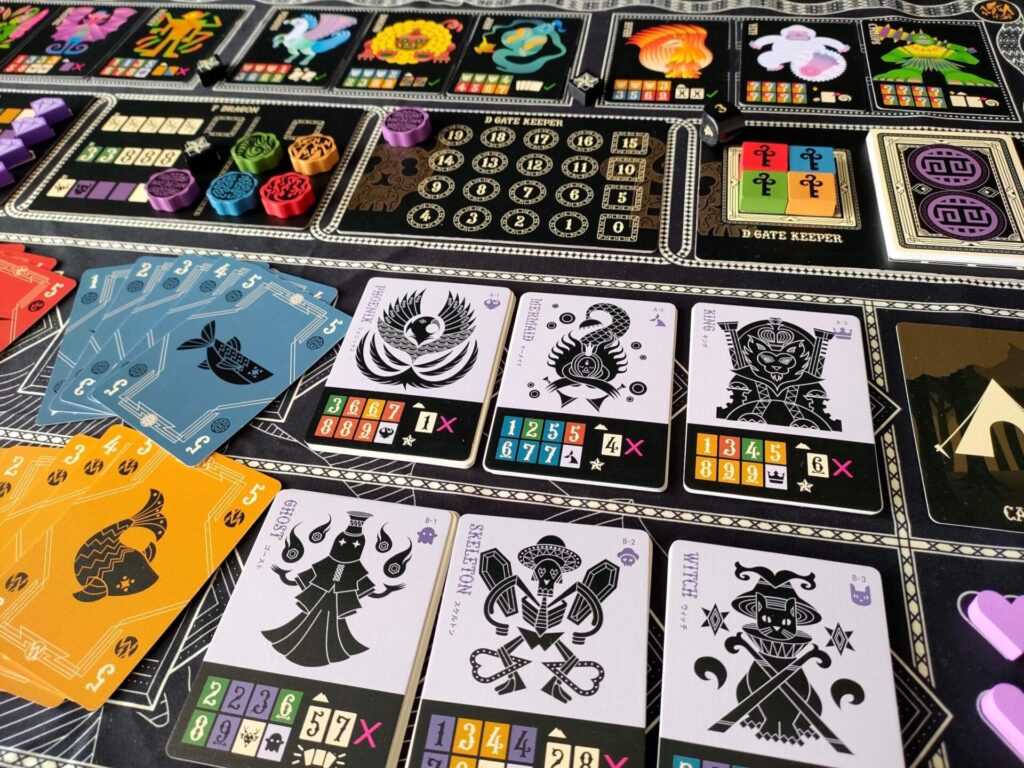
This is where the heart of Eternal Decks beats – in the puzzle that’s growing around you as the game continues. You get more and more cards, but every time you add cards, you also add restrictions. You can play cards to unlock jewels, which in turn remove restrictions, but do you opt for the easy jewels early to make your early turns more efficient, or save them until you’re really up against it?
Talking of communication, I need to mention the graphic design and iconography throughout Eternal Decks. I don’t just mean the way that everything on the cards is obvious, which it is, but also the design choices throughout. The illustrations are gorgeous, but it’s the choice to use black everywhere, contrasted by neon-bright, over-saturated colours. The Eternal cards look like those scratch-off drawings you did with crayons as a kid. Load a piece of paper with every colour in the Crayola box, cover it all with black, then scrape away to make something vibrant. That’s what Eternal Decks reminds me of.
Final thoughts
Inside every board game fanatic, there’s someone who wants to be that person who finds the hidden gem. The Holy Grail. That amazing game that hardly anyone knows about. While Eternal Decks may not be a hand-crafted game in a baggie you bought from some guy in a trenchcoat in an alley in Shibuya, it still feels like that not-quite-so-well-hidden gem at the moment. And you know what? That makes me sad. Eternal Decks is an amazing cooperative game that I want everyone to play. Everyone should be able to buy and play this game. It’s a beautiful, intelligent game full of curated, clever design ideas.
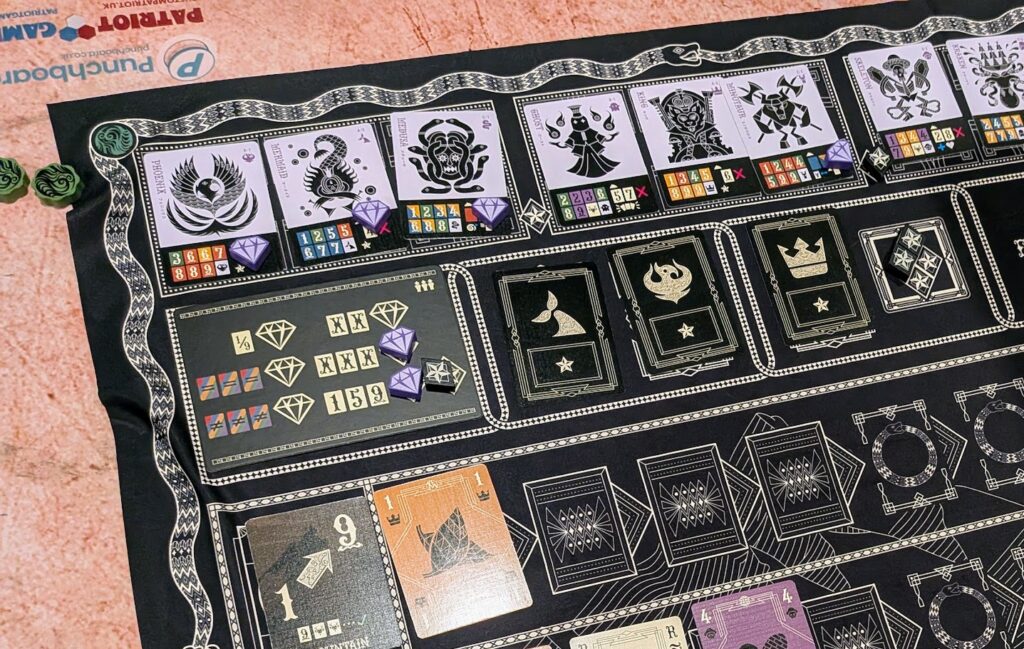
When I talk about curation, I mean the way the game’s six ‘stages’ are crafted. Each builds on the basics but adds in something a bit different. On top of this, though, is the ability to choose how difficult each stage is. Each stage has Beginner, Standard, Expert, and Pro difficulty levels. So if your group can play through a game like The Crew in one night with no failures, because you share some kind of hive mind, you can ramp the challenge up. The other thing I love is the idea of a New Game+ mode. Just as in many video games, once you complete Stage F – The Dragon – you unlock the Advanced mode. You can play A+, B+, C+, D+, E+, and finally F+, you sadists.
Sure, it’s not going to hit for everyone. If you can’t stand coop games, for instance, Eternal Decks isn’t going to be the game that changes you (although if any were to do it, this would be the one). If you hate the idea of limited communication, again, this isn’t going to set your world on fire. For the rest of us, though, Eternal Decks is outstanding. Every single thing in the box, and the box itself, is the result of serious attention to detail. A real labour of love. And while £50 (what I paid for the game) might seem like a lot for a card game, given the current state of board and card game pricing, I think it might even be a bargain. Eternal Decks is superb, and I won’t be at all surprised if it’s in the running for my game of the year.
How to buy it
Eternal Decks is easier to find than some games featured here, but still in limited quantities. Most importers are showing it as out of stock at the moment, with a potential restock in Q3 of 2025.
I reached out to the game’s designer, Hiroken, to ask about availability. This is what he had to say, snipped where appropriate:
The second edition of Eternal Decks is scheduled to be completed between September and the end of October. It will be sold in Japanese board game shops and online at Amazon Japan.
Australia, although it is temporary. The reason for this temporary is that it will be shipped directly from the Chinese factory to Australia. This will reduce shipping costs.
The second edition is scheduled to be sold at Travel Games in the UK, just like the first edition.
Portland Game Collective is in charge of North and South America.
Localization has been decided for France and Taiwan. These are the information that has been made public. There are other contracts planned, but they are not yet confirmed, so they cannot be made public.
Enjoying this article? Consider supporting me.
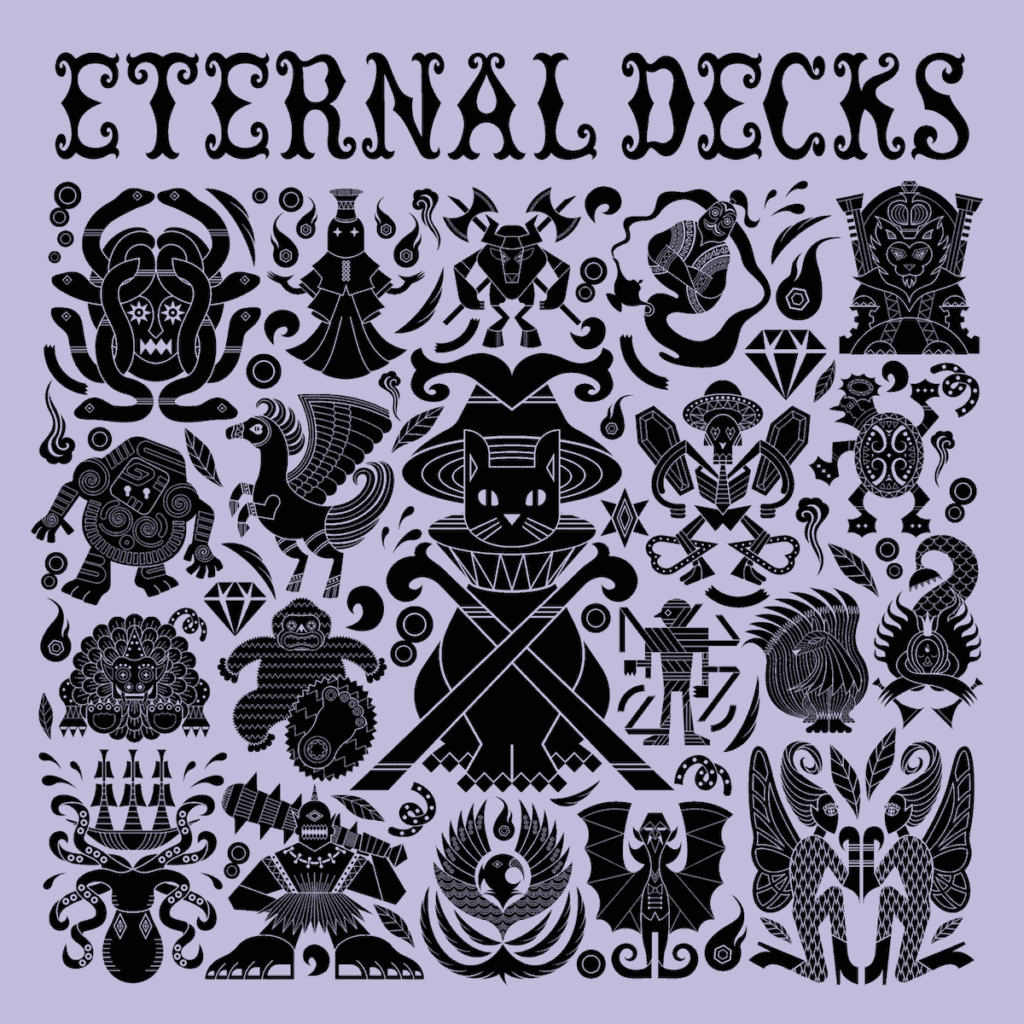
Eternal Decks (2025)
Design: Hiroken
Publisher: Tricktakers Games
Art: MUJUNSHA
Players: 1-4
Playing time: 30-45 mins
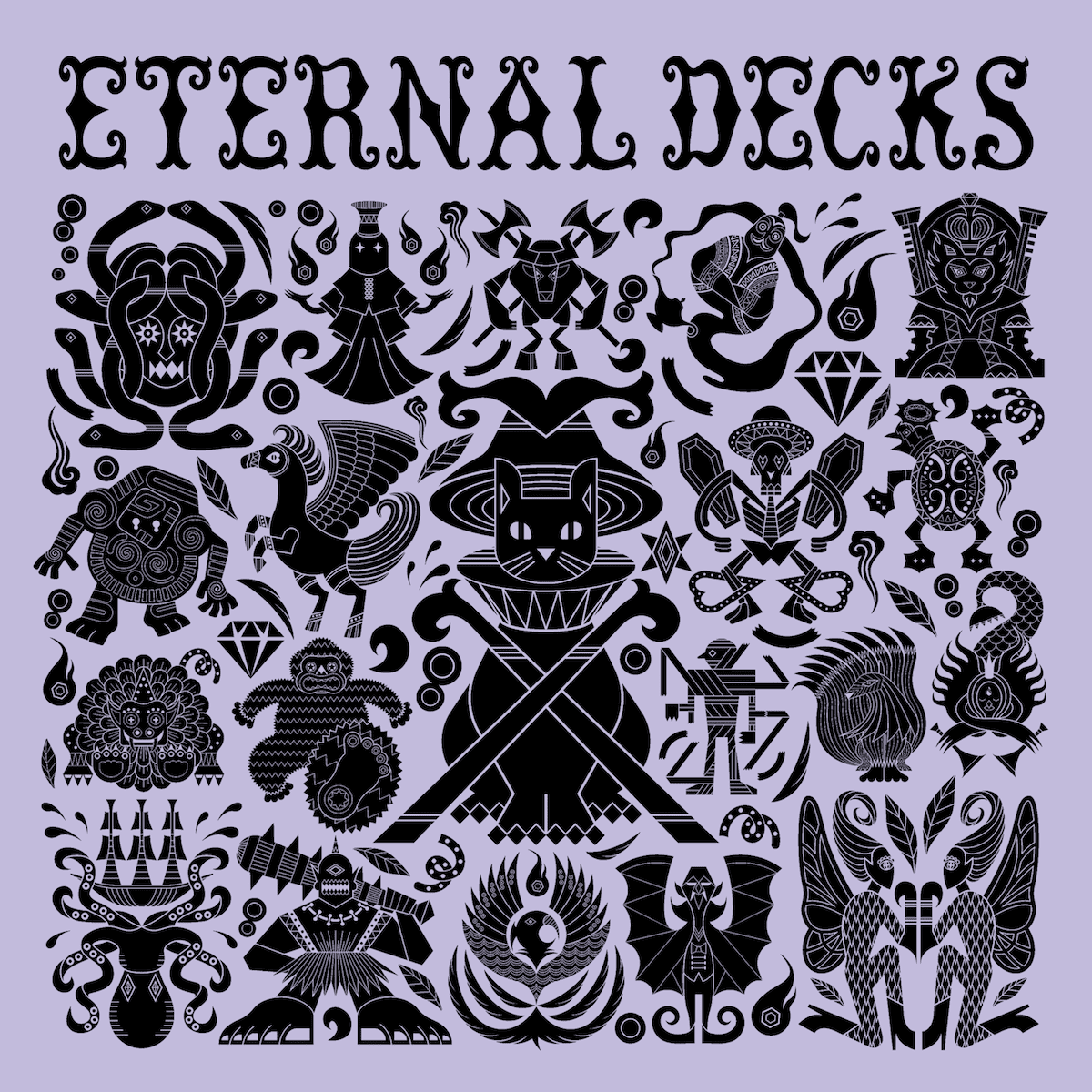


I enjoyed the writeup. We love coops and have played this with many people, but just havent found the joy youve had. For us, we just didnt find any magic or great moments in coop aspect. Its shares a lot of communication facets with The Gang, as in how you manipulate your communications chips. But in our experiences, it never came down to expert moments of communication, it always came down to does everyone at the table simultaneosuly understand the puzzle in its current game state. In other words, it became very solotaire. You analyze who has which decks and deduce, communicating and thus cooperating never fet essential. I do agree, however, people ought to try it. I feel limiting the open information could really help.
I can see where you’re coming from, for sure. I think if the game was the same for all six stages, just with different Eternals giving slightly different restrictions, I’d have gotten bored more quickly. What I like is the way it adds in new things on different stages. Nothing necessarily outrageous, but enough to get you all thinking and having a _something_ extra to consider.